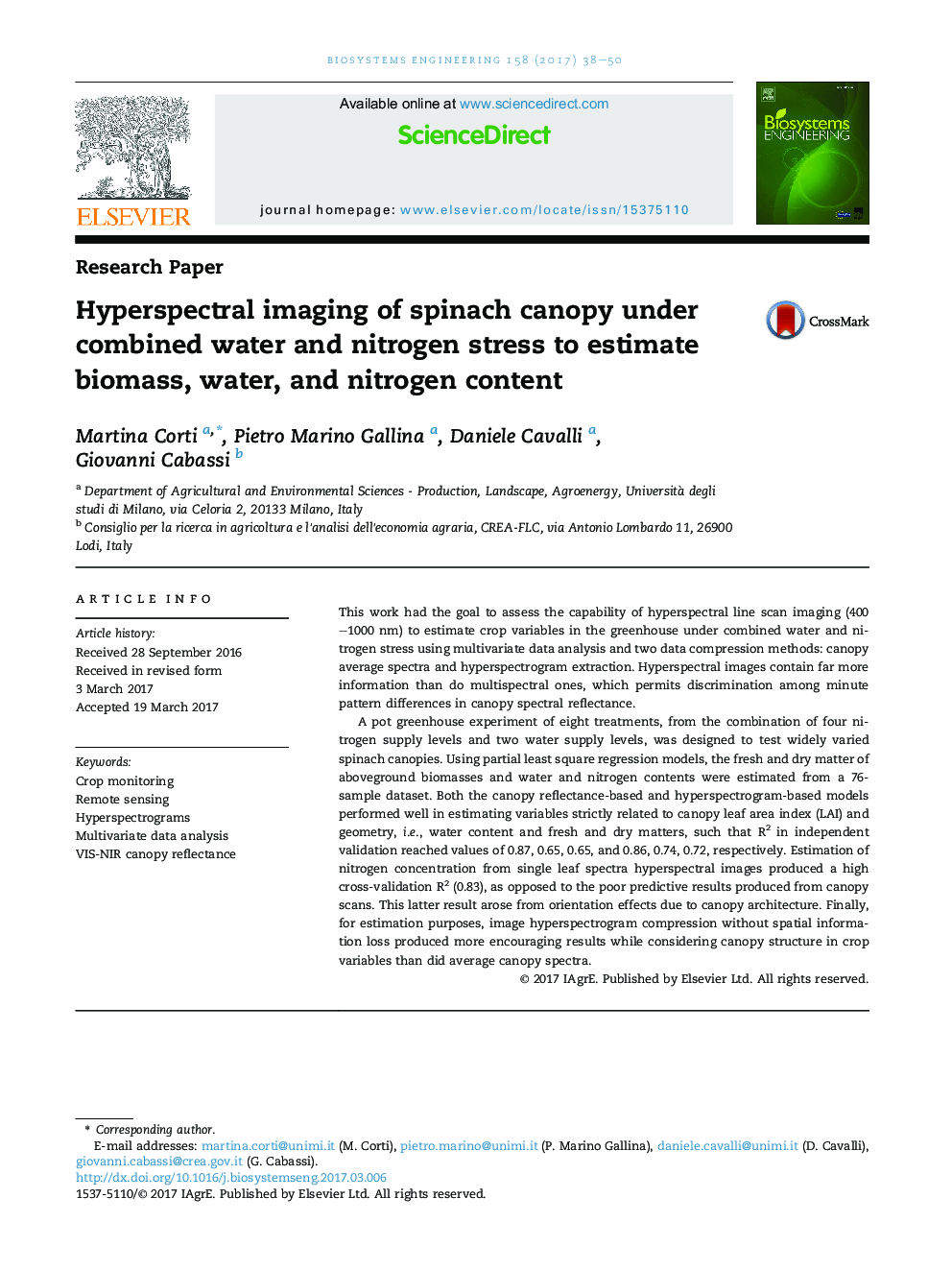| Article ID | Journal | Published Year | Pages | File Type |
|---|---|---|---|---|
| 5471911 | Biosystems Engineering | 2017 | 13 Pages |
Abstract
A pot greenhouse experiment of eight treatments, from the combination of four nitrogen supply levels and two water supply levels, was designed to test widely varied spinach canopies. Using partial least square regression models, the fresh and dry matter of aboveground biomasses and water and nitrogen contents were estimated from a 76-sample dataset. Both the canopy reflectance-based and hyperspectrogram-based models performed well in estimating variables strictly related to canopy leaf area index (LAI) and geometry, i.e., water content and fresh and dry matters, such that R2 in independent validation reached values of 0.87, 0.65, 0.65, and 0.86, 0.74, 0.72, respectively. Estimation of nitrogen concentration from single leaf spectra hyperspectral images produced a high cross-validation R2 (0.83), as opposed to the poor predictive results produced from canopy scans. This latter result arose from orientation effects due to canopy architecture. Finally, for estimation purposes, image hyperspectrogram compression without spatial information loss produced more encouraging results while considering canopy structure in crop variables than did average canopy spectra.
Related Topics
Physical Sciences and Engineering
Engineering
Control and Systems Engineering
Authors
Martina Corti, Pietro Marino Gallina, Daniele Cavalli, Giovanni Cabassi,
